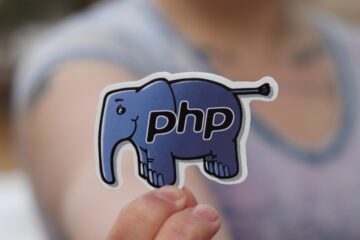
In the dynamic landscape of mobile app development, hybrid apps have become increasingly popular for their ability to bridge the gap between cross-platform compatibility and seamless user experiences. However, achieving high performance in hybrid app development requires a nuanced understanding of the technologies involved. In this comprehensive guide, we’ll explore essential tips and tricks that empower developers to build high-performance hybrid apps that not only meet user expectations but exceed them.
Understanding the Basics of High-Performance Hybrid App Development
A strong foundation begins with comprehending the basics of high-performance design. Efficient UI/UX optimization ensures seamless experiences across diverse devices. Expert hybrid app developers in UAE prioritize streamlined data handling, implementing strategies such as minimizing data payloads and utilizing effective caching mechanisms. Choosing a robust hybrid framework, like React Native or Flutter, is paramount to aligning development goals with optimal performance. This foundational understanding sets the stage for creating high-performing hybrid apps tailored for the UAE market.
1. Optimized UI/UX Design
Creating a high-performance hybrid app begins with the user interface (UI) and user experience (UX) design. Optimize your app’s design for responsiveness across various devices and screen sizes. Utilize efficient design practices, such as lazy loading for images, to enhance the overall user experience.
2. Efficient Data Handling
Efficient data handling is crucial for high-performance hybrid apps. Minimize the data payload, implement effective caching strategies, and leverage techniques like pagination to ensure that data is processed swiftly, reducing load times and improving overall app performance.
3. Choose the Right Hybrid Framework
Selecting the right hybrid framework is a pivotal decision. Consider frameworks like React Native or Flutter, which offer native-like performance. Evaluate the specific needs of your app and choose a framework that aligns with your development goals.
Tips for Enhancing Performance
4. Code Splitting
Code splitting involves breaking down your app’s code into smaller, more manageable chunks. This allows for more efficient loading, especially in scenarios where users may not need the entire app functionality immediately. As a result, load times are reduced, contributing to a smoother user experience.
5. Optimized Image Loading
Optimizing image loading is a key aspect of high-performance hybrid apps. Implement lazy loading to load images only when they are in the user’s viewport. Additionally, compress and appropriately size images to minimize the impact on app performance.
6. Minification and Compression
Minify and compress your code and assets to reduce file sizes. Smaller files lead to quicker load times, benefiting both initial app loading and subsequent interactions. This practice is particularly important for hybrid apps to ensure a responsive user interface.
7. Effective Memory Management
Proactive memory management is essential for app stability. Identify and eliminate memory leaks, use efficient data structures, and leverage tools for profiling and debugging to address memory-related issues promptly.
Tricks for Overcoming Common Challenges
8. Offline Functionality with Service Workers
Implementing service workers allows your hybrid app to work offline by caching essential assets. Users can enjoy a seamless experience, and the app remains functional even when an internet connection is intermittent or unavailable.
9. Background Processing
Incorporate background processing for tasks that don’t require user interaction. This ensures that the app remains responsive during user interactions, providing a smoother and more enjoyable experience.
10. Utilize Native Modules
Leverage native modules for computationally intensive tasks or operations that require direct interaction with device-specific features. This hybrid approach allows you to harness the power of native capabilities while maintaining cross-platform compatibility.
FAQs about Building High-Performance Hybrid Apps
Q1: Are hybrid apps slower than native apps?
A1: Hybrid apps can achieve performance comparable to native apps when optimized correctly. Choosing the right framework, implementing efficient coding practices, and leveraging native capabilities are key factors in achieving high performance.
Q2: How can I improve the loading speed of my hybrid app?
A2: To enhance loading speed, consider techniques such as code splitting, optimizing image loading, minifying and compressing code, and implementing efficient data handling practices.
Q3: Is it necessary to prioritize high performance for all types of hybrid apps?
A3: While high performance is crucial for many hybrid apps, the extent of optimization may vary based on the app’s complexity and user expectations. For resource-intensive applications or those requiring real-time interactions, prioritizing high performance is recommended.
Q4: How do I address memory-related issues in a hybrid app?
A4: Effectively manage memory by identifying and fixing memory leaks promptly. Utilize tools for profiling and debugging, and ensure efficient memory usage through appropriate data structures and cleanup processes.
Q5: Can I achieve offline functionality in a hybrid app?
A5: Yes, you can implement offline functionality in a hybrid app using service workers. By caching essential assets, the app can remain functional even in offline scenarios.
Conclusion
Building high-performance hybrid apps requires a strategic combination of optimized design, efficient coding practices, and a deep understanding of the chosen hybrid framework. By implementing the tips and tricks outlined in this guide, developers can navigate the complexities of hybrid app development and deliver applications that not only meet but exceed user expectations. As technology continues to evolve, staying updated on best practices and emerging trends will further empower developers in their pursuit of creating high-performance hybrid apps. Happy coding!
Also read: UAE AI Minister Omar Al Olama Stresses Balance for AI Regulation
UAE Metaverse Market Will Hit Big Revenues in Future
March 13, 2024Embracing Web3: The Future of Decentralization
March 12, 2024
Leave a reply Cancel reply
You must be logged in to post a comment.
More News
-
Malonic Acid Price, Historical Charts, Forecasts & News
January 17, 2024 -
Clearing the Air: Mold Testing Services in Massachusetts
February 6, 2024
Buzz10: Navigating the News Frontier. We’re more than a news platform. We’re your daily news compass.
About Us
We are Buzz10 – We simplify the complex world of news, making it accessible and engaging.
Contact: info@buzz10.com





